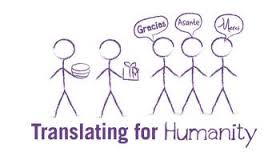In this blog I want to shed light on the development of standardisation for translation and interpretation. I don’t want to go into detail about the process of standardisation, I just want to highlight the few specialisations that have approved ISO standards.
Why standardisation?
International standards for any industry serve to safeguard consumers and end users by defining quality products and services. They ensure that the certified products and services conform to the minimum standards set internationally. For the T&I industry, this means conformity and harmony in providing language services, making the industry more efficient.
Why certification?
A certified translator or interpreter has been assessed by a governmental or professional organisation to determine if they are qualified to provide a particular service.
What is ISO?
ISO, or the International Organization for Standardization, is a global standardisation organisation that provides a framework to certify certain quality management procedures. It is located in Geneva, Switzerland, and it has 162 member countries. ISO is the world’s largest standards organisation and has been providing international standards since 1947.
Until today only three applicable standards, two regarding translation and one regarding interpretation, have been published by ISO.
1) ISO 11669:2012 Translation projects – General guidance
“This Technical Specification provides general guidance for all phases of a translation project. Its main purpose is to facilitate communication among the parties involved in a project. It is intended for use by all stakeholders of the translation project, including those who request translation services, those who provide the services and those who make use of the results of the project – in particular, the translation product. It applies to multiple sectors, including the commercial and government sectors, and non-profit organizations.
It provides a framework for developing structured specifications for translation projects, but does not cover legally binding contracts between parties involved in a translation project. It addresses quality assurance and provides the basis for qualitative assessment, but does not provide procedures for quantitative measures of the quality of a translation product.
It is not applicable to interpreting services.”
(Source: ISO)
2) ISO 13611:2014 Interpreting – Guidelines for community interpreting
“ISO 113611:2014 is a guidance document. It establishes and provides the basic principles and practices necessary to ensure quality community interpreting services for all language communities, for end users, as well as for requesters, and service providers. Furthermore, it provides general guidelines that are common to all forms of community interpreting. ISO 113611:2014 is applicable to settings wherever speakers of non-societal languages need to communicate to access services. The settings vary and can include, among others, the following: public institutions (schools, universities, community centres, etc.); human and social services (refugee boards, self-help centres, etc.); healthcare institutions (hospitals, nursing homes, etc.); business and industry (real estate, insurance, etc.); faith-based organizations (rituals, ceremonies, etc.); emergency situations (natural disasters, epidemics, etc.).”
(Source: ISO)
So far, this is the only standard regarding interpretation published by ISO. Others are pending approval, as you can see in the overview mentioned below.
“ISO recently published its first International Standard for interpreting: ISO 13611:2014, Interpreting: Guidelines for Community Interpreting. The second ISO standard, 18841, will be a stricter requirements standard that addresses all areas of interpreting; 18841 is intended to be an ‘umbrella’ standard.
This standard which should be completed by 2017 addresses three key areas:
• Terms and definitions
• Requirements for interpreters
• Requirements for Interpreting Service Providers (ISPs, including self-employed interpreters who act, in effect, as their own interpreting agencies).
After the standard is published, some companies may seek to create a certification programme, particularly for ISPs, based on the standard.”
(Source: February 18, 2015 • Gothamadmin • Articles, Interpretation. Article based on an interview by Margarite Heintz Montez with Marjory Bancroft)
3) ISO 17100:2015 Translation services – Requirements for translation services
“ISO 17100:2015 provides requirements for the core processes, resources, and other aspects necessary for the delivery of a quality translation service that meets applicable specifications.
Application of ISO 17100:2015 also provides the means by which a translation service provider (TSP) can demonstrate conformity of specified translation services to ISO 17100:2015 and the capability of its processes and resources to deliver a translation service that will meet the client’s and other applicable specifications.
Applicable specifications can include those of the client, of the TSP itself, and of any relevant industry codes, best-practice guides, or legislation.
The use of raw output from machine translation plus post-editing is outside the scope of ISO 17100:2015.
ISO 17100:2015 does not apply to interpreting services.”
(Source: ISO)
The new standard for translation services, 17100:2015, published by ISO on 24 April 2015, replaced the European EN-15038 standard. It was published after being approved by all ISO countries in the TC37 committee.
“ISO 17100 was prepared by the International Standards Organization’s Technical Committee ISO/TC 37, Terminology and other language and content resources, Subcommittee SC 5, Translation, interpreting and related technology. It traces back to the current European standard for translation services, EN 15038, released in 2006. Standards are reviewed every five years, and since the Vienna agreement encourages issuing standards on the highest, international level, and avoiding duplication between European and international standards, an initiative from several national standards organizations led to work on this ISO standard in 2011.”
(Source: Posted by Libor Safar on Thursday, August 14, 2014 @ 5:00 PM (Moravia))
For a full overview of the published and pending standards, see the link Overview of ISO standards for translation, interpreting and related technology, below. The ones marked with √ are published.
http://www.iso.org/iso/iso_catalogue/catalogue_tc/catalogue_tc_browse.htm?commid=654486

























